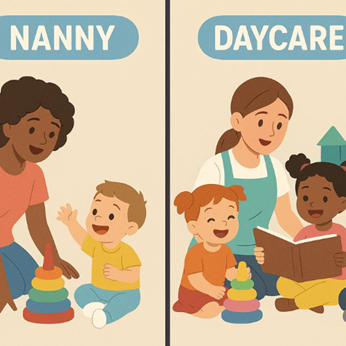What Are Bad Behaviors In A Cockatoo
Cockatoos are recognized as very intelligent and playful birds that have a strong personality. They could also display bad behavior that is not always due to instincts or bad habits; they could be due to other reasons also. Once we know what is troubling our pet bird, we could do everything possible to turn him/her into a well behaved pet.
Some of the bad behaviors in cockatoos are:
Screaming and screeching: This is one of the most natural behaviors of these pet birds that are otherwise friendly and loving; most cockatoos tend to scream and screech especially at dawn and dusk.
It would help to reduce screaming and screeching by keeping the cockatoo in a room where there are other people; most isolated cockatoos instinctively call out to their flock. It would also help to make a calmer and quieter bird by providing flapping exercise sessions, easy access to chewable branches and giving frequent long showers that relaxes the pet bird.
Feather plucking: Quite common in cockatoos, feather plucking could range from occasional pulling of a bothersome tail feather to full-on mutilation that could also leave bloody scabs on the pet bird’s body.
One of the common reasons for feather plucking could be boredom; stimulating the bird with plenty of toys would help. It would also help to rotate the toys, so they enjoy and find the activity stimulating. Spending some extra quality time with the pet bird would also help to make the pet bird feel wanted and loved. It is however wrong to ascribe feather plucking purely to boredom; it could also be due to mites or skin allergies and a vet is to be consulted to rule out these possibilities.

Biting: Birds in the wild like cockatoos rarely use their beaks; but cockatoos may bite just for fun.
Yelling at a cockatoo when he bites would only encourage him as cockatoos associate a screaming behavior for fun. You could discourage your pet bird from biting by calmly but firmly saying, “No” with a frown; the cockatoo would sense your displeasure. Then calmly make him walk from one hand to the other; known as laddering, this is a negative experience for the pet bird and he will stop biting.
Dominant and recalcitrant behavior: This misbehavior is not truly dominance, but the cockatoo’s way of not obeying you.
You could effectively get what you want by gently persuading your pet bird and making the action more fun; it is futile to force your cockatoo. If your cockatoo resists leaving a high perch to return to the cage, you could show him special attention and put a special treat in the cage for him when he returns. He would be tempted to come back to the cage. You could practice this behavior even at ordinary times; your pet cockatoo will then learn to obey you with the least stress in a reward rich environment.
Hope you are well equipped to tackle the bad behavior of your cockatoo?
Take the next step toward your goals
Share your requirement and find the best care providers in your area
-
Looking for a caretaker’s job? Build your profile and get in touch with families in your vicinity.
-
Discover nannies, babysitters, cooks, housekeepers, pet sitters, and elder care under one roof.
-
Get all the support you need to run a successful care center.
-
Search for appropriate centers near you depending on your needs.
Care Corner Insights: Blog Library

Nanny vs. Daycare in Naperville, IL: What Works Best for Indian Working Couples?
Hey Naperville Parents! Balancing work and family life is no small feat—especially for Indian working couples trying to juggle careers, household responsibilities, and parenting. One of the biggest decisions you’ll face? Choosing between a nanny or

Housekeepers in Sugar Land, TX: Deep-Cleaning Checklists for Indian Homes
Housekeepers in Sugar Land, TX: Deep-Cleaning Checklists for Indian Homes Indian cooking = flavor + spices + love… but also oil splatters and stubborn stains. Time to reset! Degrease stovetops, chimneys, and exhaust fans. Scrub countertops, tiles,

12 Easy After-School Snack Ideas for Kids Who Get Hungry Quickly
School’s out, and the hunger hits hard! If your little ones come home ravenous and ready to raid the kitchen, you’re not alone. After-school snack time is prime time for refueling, recharging, and maybe even sneaking in a little nutrition. So here ar

Vegetarian Home Cook Services in Sunnyvale, CA: North & South Indian Meal Prep for Busy NRIs
Between work, family, and daily responsibilities, finding time to cook fresh meals can be difficult. That’s when a vegetarian home cook service in Sunnyvale makes life easier—bringing authentic North and South Indian dishes straight to your table. T

Hiring a Live-In Nanny in Plano, TX: A Practical Guide for NRI Households
For NRI families living in Plano, TX, raising children while managing work and household responsibilities can feel overwhelming. Many parents find that hiring a live-in nanny provides the right balance of support, convenience, and cultural comfort. U

Daycares in Fremont, CA for Indian Toddlers: Curriculum, Food Policies & Waitlists
You’ve probably met them — the parents at the park chatting about Montessori vs. play-based learning while handing their toddler a homemade paratha. The ones who ask every daycare in Fremont if they serve vegetarian meals. And yes, the ones who have

Babysitters in Jersey City, NJ for NRI Parents: Last-Minute, Weekend & Evening Options
You’ve probably seen them — the parents juggling grocery bags in one hand and a phone call to grandma in India in the other, while trying to keep their toddler from running into the road. The ones who cancel dinner plans because the babysitter bailed

Best Nanny Services in Edison, NJ for Indian Families: Costs, Language, and Cultural Fit
Edison, NJ, is home to one of the largest Indian communities in the U.S., and finding a nanny here often means looking for more than just childcare skills. For Indian families, cultural understanding, language fluency, and traditional values play a b

What Is Helicopter Parenting? How It Affects Children and Ways to Avoid It
You’ve probably seen them. The parents at the playground who shadow every move, wiping invisible germs off the slide before their child touches it. The ones who fill out job applications for their teens. And yes, the ones who email college professors

Are Weighted Blankets Safe for Children? Pros and Cons Explained
Weighted blankets have become a cozy trend in recent years. From helping adults sleep better to calming anxiety, they’ve earned a spot in many households. But when it comes to kids, especially the little ones, parents often ask: Are weighted blankets